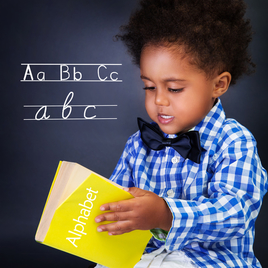 For the last newsletter I focused on
babies. This month the focus will be on children ages two and three, and next
month ages four and five. Some people refer to this storytime for twos and
threes as “Toddler Storytime,” though I am quite frankly not fond of this
designation. (See reflections below.)
Just a reminder that a webinar was
already held on August 22 concerning storytimes for children ages two and
three. (By the way, on November 10, the
final group, ages four and five, will be highlighted.) Again, like last month, I
am not going to repeat here what was covered in the webinar, and I highly
recommend that if you are interested in the topic, that you access the archived
webinars when you have time, and listen to them. You can find them here: http://www.michigan.gov/libraryofmichigan/0,2351,7-160-62245-370596--,00.html Scroll down to webinars, and click
on the date.
In the webinar for twos and threes,
the following topics were covered: tips for incorporating books and activities
on the five practices of ECRR (Talk, Sing, Read, Write and Play) into
storytimes; what types of books are recommended for these ages along with suggested
titles; music and play activities for twos and threes, and fun activities that
will assist in developing the small motor skills they will need later to learn
to write, plus recognizing print and alphabet letters.
So mentioned here will be some other tips for storytimes for this age
group that were not specifically covered in the webinar. First, here are some
tips on conducting these storytimes:
Twos & Threes Storytimes - Tip Sheet
·
For
children ages two to three AND their parent/caregiver
·
The
caregivers should participate in all activities –rhymes and songs - and help
the child act out the motions or actions.
·
Not
all two’s will have the fine motor skills to do finger plays as three’s might
so adults can help with finger rhymes. Good rhymes to use have basic movements
like opening and closing hands, pointing to various fingers in countdown
rhymes, or using the whole arm in motions
·
Some
younger children may watch and listen only, some will participate and some may
appear to pay little attention or may attempt to wander around the room.
·
Storytimes
are usually thematically arranged however if you do select a theme,
make sure that every activity/book related to that theme is developmentally
appropriate
·
Groups
of 15 to 20 children with the caregiver is a manageable group
·
Adults
usually sit on the floor with their child in front of them or some two’s may
still sit on their lap
·
Librarian
sits in front facing caregiver and children in a location where everyone can
see
·
Books
used should have one to two sentences per page as these children often have a
short attention span
·
Have
your first book be the longest text; if possible have at least one story that
is more visual (i.e. using a prop, flannel or magnetic board story)
·
Because
children are active, use short age-appropriate stories and quick activities
that allow for a lot of movement
·
When
offering a series of programs, try to repeat some activities from week to week,
particularly an opener and closer
·
Provide
a sheet of activities used that day for caregivers to take home and use with
children & have a display of appropriate books for two’s and three’s for
check-out
·
Consult
the following Resource Books:
Briggs, Diane. Toddler Storytime Programs. Metuchen:
Scarecrow, 1991.
Briggs, Diane. Toddler Storytimes II. Metuchen:
Scarecrow, 2008.
Hopkins, Carol Garnett Artsy Toddler Storytimes: A Year’s Worth of
Ready-to-Go Programming. Neal-Schuman, 2013.
Maddigan, Beth and Stefanie
Drennan. The Big Book of Stories, Songs,
and Sing-Alongs: Programs for Babies, Toddlers, and Families. Libraries
Unlimited, 2003.
Nichols, Judy. Storytimes for Two-Year-Olds. Third
edition. American Library Association, 2007.
Very Ready Reading Program. Manual for 2’s and 3’s. Upstart/Demco. 2014 Sue McCleaf Nespeca
& Pam Schiller, authors.
|